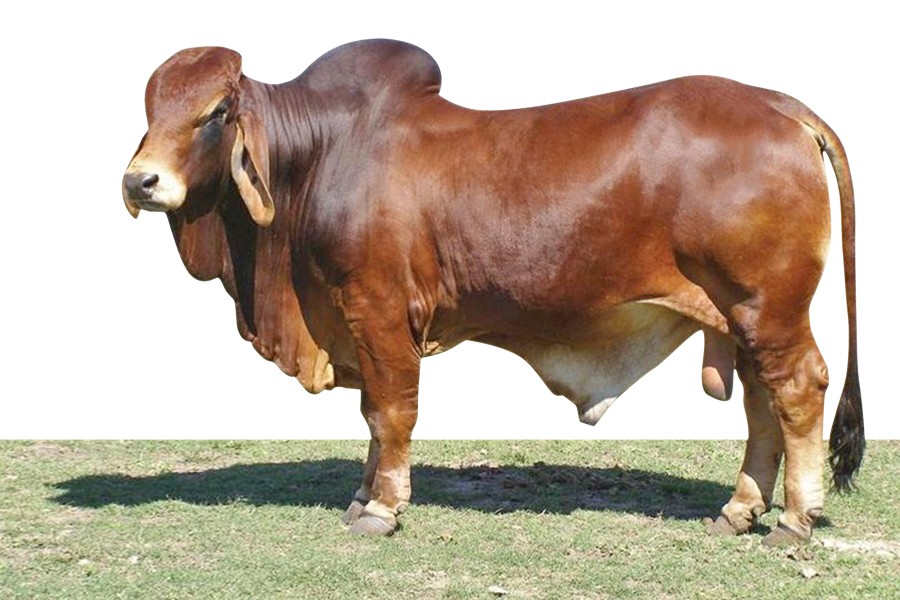
Published :
Updated :

Gone are the days when the Muslims with means willing to sacrifice animals had to wait anxious moments for days before the Eid-ul-Azha. Cattle brought in---legally or illegally --- from neighbouring India and Myanmar primarily decided the supply of sacrificial animals in the market here and understandably their prices. Locally raised bulls/oxen were typically of a variety not generally big enough but better than the skinny cows of local or foreign stocks. Only rarely were some large and heavy oxen reared by individual farmers with an eye to get a premium price on the occasion of the great festival.
There was uncertainty over the size of the cattle market almost every year. That uncertainty is over now. This has not happened overnight but within a few years. Ministries and departments concerned have assured time and again that the country has bred more cattle than it needs right now. Indeed, over the past few years, there is no supply shortage of sacrificial animals. Now the concern is more about smuggling of Indian and Myanmarese cattle into the country. Recently, a contemporary carried in a report on the clandestine cross-border cattle business on both fronts of Bangladesh border.
This is unacceptable. When the country produces enough of any commodity, there is no logic for its import legally or illegally. It was indeed a miracle made possible for a country awfully deficient in milk and meat. Production of milk has also gone up but it still falls short of the country's requirement. But how was it possible? There are individual farmers who rear, like they did before, one or two cows and oxen. But that would never have made the miracle happen.
In fact, it is a new breed of young entrepreneurs which was behind a sort of dairy and cattle farming revolution. Cattle farming was an alien concept to traditional farming community. In a land-scarce country, even policymakers were in doubt if cattle farms could be arranged. This is not America where in the south, Texas has over the decades developed the cowboy ranching. Vast Blackland prairies full of grass were suitable for ranching there. In Bangladesh, there were no such grasslands.
However, the young generation of entrepreneurs took up the challenge and were successful in their mission. They began modestly with cows and oxen of both local and foreign stocks. Some have gone so far as to raise cattle of special local and exotic varieties famous for their meat. They have introduced advanced farming practices and technology for developing business. Many of them claim their oxen are fed with organic feed. This is rather amazing if it is so. In a country where there is little scope for leaving lands for growing grasses, managing cattle feed is indeed a daunting challenge.
There are farms in the vicinity of Dhaka city. Those farms do not bother about taking their herds of bulls or oxen to any cattle market. Their soaring credibility is enough for sale of their cattle online. In some cases, customers are welcome to visit the farms and choose oxen they like to buy. Here the advantage is that the farms have their own transport to send the animals to the addresses of customers. This is quite a convenience customers hardly want to miss.
Kudos to the architects who transformed the small indigenous cattle population into a large one that is sufficient for the country's need now. What goes to their credit in particular is their own initiatives behind this success story. They are raising bulls and cows of Holstein Friesian and Jersey breeds. But they are perhaps yet to experiment with cross-breeding like the Americans did with Brahman stock of Indian origin. These are obtained through cross-breeding from a number of huge cattle such as Gir and Ongul. If America can take cattle from India to produce their special heavy variety, so can the new generation of farm managers in Bangladesh. Let them come forward in such enterprising business.
Cows and bulls that give comparatively more milk and meat are always in demand. It is time the farms added more varieties to their current stocks. The Brahmans, Girs and Onguls are known for adapting themselves to tough environment and are not prone to diseases. These are good reasons for inclusion of these breeds in farms of Bangladesh.


 For all latest news, follow The Financial Express Google News channel.
For all latest news, follow The Financial Express Google News channel.